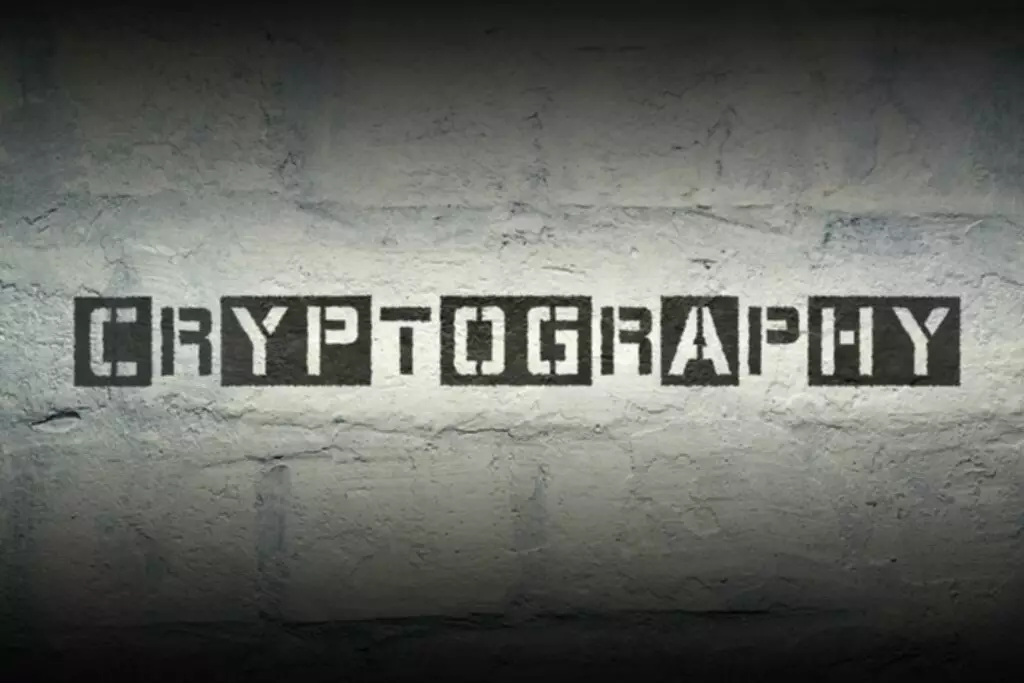Content
Binance Smart Chain incorporates smart contract functionalities that put it in direct competition with Ethereum. It brings interoperability and the programming capacity of the Ethereum Virtual Machine in Binance Chain as one of its great strengths. Potential for interoperability with other applications, one of the big reasons why almost the entire DeFi industry relies on this mainnet. When any part of nodes does not accept amendments, the application needs to be updated on each node of Peer to Peer network aka, P2P network. Are a potent example of what not to do if we want a truly decentralized Web3 space,” he said. Tom Blake is a personal finance writer with a passion for making money online, cryptocurrency and NFTs, investing, and the gig economy.
- A lightweight node can be very easy to navigate by using a few easy steps.
- The operation of a simpler tool such as lightweight nodes, however, can be easy to achieve by following a few simple steps.
- Simply put, a node is any system that connects to a network to perform specific duties across communication channels.
- It is essential to have knowledge of blockchain nodes and how it works.
- Therefore, blockchain can guarantee the fidelity and security of data records and generate the need for a third party.
- The decentralization of the digital ledger also means that the records of transactions are considerably available to the public.
- Because it is a global currency foundation set on values of supply and demand, it could create many new opportunities for the developed world to help the developing world make progress.
There is no need to deal with different forms of accounting rules or multiple ledgers when using blockchains for transactions. The entire process is simplified, which makes it easier to manage financial transactions, improve the speed of those transactions, and even lower overall transaction costs. Many are familiar with it because it was the mechanism used for Bitcoins. Today, however, blockchain technologies are evolving beyond cryptocurrencies to become an influence in how every industry conducts business. That is because instead of using a centralized network, blockchains use a distributed network.
Moreover, you will not have to go through a lot of verification since the transaction data is consistent and up to date across the network. A consortium blockchain is a semi-decentralized blockchain where different companies come together to create a network. In this type of blockchain, various companies control the network instead of a single entity like in a private blockchain. A key thing to note is that the consortium blockchain has all the advantages of a private blockchain, and it can be considered a sub-category of the private blockchain. On the other hand, a private blockchain is a centralized, restrictive, and permission blockchain operative only in a closed network. Many blockchain enthusiasts are glorifying blockchain technology as the next big thing after the internet.
Let’s say you have Ethereum version USDT and you want Binance version USDT. Hyperledger Sawtooth is a business blockchain protocol for creating… Disruptive technology like blockchain has brought a radical change… This could either be in the form of censorship of access or transaction, bad faith on the part of the central point of control or the vulnerability to external attack. Terra is a blockchain protocol supporting decentralised Stablecoins pegged to fiat currencies. It has seen significant increase in use given very generous returns from applications like Anchor with a 20% APY.
Now that we have explored some of the advantages of blockchain, let’s look at some of the disadvantages and impediments to adoption. 1 – Centralized based – In this bridge, a centralized authority involves in completing the transaction. This one is less popular among the users because users have to put their trust in a centralized mediator. https://xcritical.com/ In recent years, some organizations are also offering node-as-a-service to help users skip running a node on their own. A node service cuts down on the time you will spend maintaining and managing nodes by yourself. It lets you focus on the core work – building your product – rather than worrying about infrastructure maintenance.
Imagine you have Solana island, where tokens on the Solana blockchain like Solana and Serum operate. Then, you also have Ethereum island, where ERC-20 tokens like ETH and Chainlink exist. For more information and a complete list of our advertising partners, please check out our full Advertising Disclosure. CultOfMoney.com strives to keep its information accurate and up to date. The information in our reviews could be different from what you find when visiting a financial institution, service provider or a specific product’s website.
What Is A Blockchain?
Thinking about uses of multi-blockchains without crypto blockchain bridge is kinda funny. Maybe you think why we need crypto bridges while we already have a crypto exchange or Dex, then yes, you are right. But with these exchanges, we can’t reach to every user standing in the line.

A lightweight node can be very easy to navigate by using a few easy steps. Nodes are an essential part of blockchain’s infrastructure that helps access information. Nodes are devices that work as a communication hub for various network tasks. The chief responsibility of a node is to confirm the legality of each subsequent batch of network transactions, known as blocks. A node ensures the data it holds is secure, valid, and accessible to the allowed people.
Blockchain Is Energy Efficient
Information on a blockchain is instead stored on a network of computers that all have duplicate ledger copies. Having information stored across the network in this way increases What is a Blockchain Bridge And How it Works security and makes it extremely difficult to hack. Currently, all most every blockchain bridges are centralized, and they are governed by an institute or persons.

The benefits of using a lightweight node are that they are convenient to use and it can be accessed with a couple clicks from a smartphone, computer, or other device. Lightweight nodes can be accessed via an internet connection using a smartphone or tablet anytime without the need for any awkward steps. This kind of wallet gives you access to your crypto assets at any time, from anywhere. Second, in order to put lightweight nodes on the Ethereum blockchain, you’ll need an application or software that can help you access the Ethereum blockchain. Lightweight nodes or Lightweight nodes are downloaded wallets connected to full nodes for validating the data stored on the blockchain. Simple Payment Verification node or lightweight node is used in day-to-day crypto operations.
List Of The Disadvantages Of A Blockchain
It’s always important to do your due diligence when using a blockchain bridge. It also means reading any whitepapers or information on the blockchain bridge that you can find. RenBridge is decentralized, and all of this minting and burning happens by using smart contracts. The simplest analogy for a blockchain bridge is to picture it as a bridge between two isolated islands. In fact, there are many popular networks, like the Binance Smart Chain or Ethereum network, that these different coins are built on. Despite all the mentioned advantages, the drawback of blockchain cannot be ignored.
This is where blockchain bridges become incredibly useful and help provide cross-chain interoperability. The entire process of authenticating transactions and creating blocks or transaction records is called blockchain mining or minting. This process transpires through a peer-to-peer network of computer systems scattered across a large geographic area. In this scenario, the blockchain could provide a secure and stable record of all financial transactions that take place within the company. Some blockchain advantages include its financial inclusion potential, decentralization, transparency, and reduced transaction fees.

Lightweight nodes hold a block header instead of having a complete history of a blockchain. The header seeks to support and query the volatility of the previous transactions. A block header is the summary of a specific block that includes information related to the last block. Though ChainBridge aspires to a more decentralised model, it suffers the same problem as Bitgo and custodial bridges – they are counter to the decentralised principles of blockchains.
Once a transaction has been included within a block on the longest chain, it cannot be reversed. It is this feature that helps blockchains and cryptocurrencies to function as they do. There are escrow services available to ensure transactions are safe for both parties, but then that reduces the advantage in a lack of intermediaries. Some might even see irreversible transactions as a benefit, depending on what they intend to use this technology for. Many governments do not recognize the actual value of cryptocurrencies or blockchains, despite their rise in popularity.
Imagine a world in which blockchains can talk to each other, so they can transfer assets, like cryptocurrency or tokens, peer-to-peer. Well, technology has come a long way over the past few years since Bitcoin was created. It’s now possible to transfer assets across different blockchains without an intermediary. Here are the best five centralized and decentralized crypto blockchain bridges. Blockchain technology is more secure than traditional centralized systems. The security of the blockchain network largely depends on the distribution of nodes and if they are acting according to the rules and protocols set in the network.
Blockchain Enables Tokenization
There is no utopian solution to the problem of blockchain interoperability. As one of the most popular solutions to bridging blockchains is to require some level of trust this naturally brings the disadvantages of a single central point of control. Ethereum is the dominant blockchain for supporting decentralised applications, particularly in the sector known as DEFI – decentralised finance. DEFI includes a whole range of financial services for crypto users, such as lending/borrowing and swapping.

Another remarkable advantage is that transactions via this technology are almost instantaneous. The digital nature of the blockchain and its peer-to-peer characteristics allow transactions to be completed in several minutes. In addition, a peer-to-peer network lacks central vulnerabilities or points of failure that can be exploited by hackers. Because the ledger is shared across the network, it is not only more secure than a centralized network but also allows for public cross-checking. Hence, one of the defining characteristics of blockchain technology is that it can be operated and maintained through an open-source community or via a distributed peer-to-peer structure.
Disadvantages And Advantages Of Blockchain
With a smart contract, the parties agree on terms and conditions, which are entered into the blockchain ledger. The transaction is automatically executed when all terms of the agreement are met. First, while all blockchains are based on the same technological principles, all do not perform equally.
Blockchain: What Are The Advantages And Disadvantages Of This Technology?
That could be recent Bitcoin transactions or updated Ethereum account balances. Blockchain transparency has its limits, though, because pseudonymity is completely possible. The blockchain has made quite an impact, beginning as the technology that powers Bitcoin before branching out into different use cases that many businesses are already taking advantage of.
When developing a blockchain, there can be a lot of indecision when determining which language to use for the final product. Some blockchains have settled on using JavaScript, since many programmers are familiar with this language already. From a development standpoint, however, someone would need to be fluent in multiple programming languages to maximize the potential benefits offered by this technology. And if you plan on investing across multiple digital assets on different chains, you might even need a blockchain bridge in the near future.
Data
Miners use their computers or lend their computer resources to a peer-to-peer network to solve computational math problems. Blockchain creates an irreversible audit trail, allowing easy tracing of changes on the network. Even though network architecture makes attacks costly and difficult, hacking is not impossible. I am one of the Technology Savvy who also loves to write about technology. I have well experienced in the field of IT and I am Author of this Blog Hitechwhizz which was created to help people fix Technology related complications and answer their queries.
Similar to the hybrid blockchain, the federated blockchain combines the beneficial features present in both the public and private blockchains. This makes some records open, while maintaining the security and privacy of others. Decentralized blockchain bridges, also known as trustless bridges, rely on smart contracts to transfer tokens between blockchains. This means there’s no central entity like a crypto exchange or bank that helps move tokens around. The applications of blockchain technology have expanded beyond cryptocurrencies. AnySwap bridge- It is now changed to Multichain and is considered one of the best-decentralized blockchain bridges.
In February the Wormhole Bridge hack saw 120,000 Wrapped Ether tokens, valued at $326million, stolen from the Solana side of a bridge to Ethereum. Naturally Ethereum users want to get in on that action so the Terra Bridge is very popular, enabling holders of wrapped versions of Terra assets like Luna, to swap for native versions. Terra Bridge also supports assets from Binance Smart Chain and Cosmos. Darwinia – Using a light client approach for native verification on Ethereum and a number of other popular chains. Avalanche is considered one of the genuine challengers to Ethereum, as similar to Solana, it offers improved throughput. You can bridge any ERC20 token to Avalanche and back using the Avalanche Bridge.
Reliance On old Technology
First, it performs signature verification, which involves signing transactions cryptographically. Blockchain also relies on a consensus mechanism to validate transactions. Some consensus mechanisms, such as proof of work, have a low transaction throughput. Finally, there is redundancy, where the network requires each node to play a crucial role in verifying and storing each transaction. One blockchain might have a different system for making crypto transactions, storing data, or issuing tokens — resulting in incompatible ledgers, transactions, and data. We’ve seen this be a real obstacle to the adoption of blockchain in finance.